Yesterday once more: The feel-good sadness of a Carpenters fan convention
- Share via
Jeffrey de Hart is standing at the edge of a driveway in Downey. Not just any driveway, but the one before the ancestral home of the Carpenters. The two-story tract house, these days with several concrete deer frolicking in front, is recognizable from the photograph on the cover of the duo’s 1973 “Now and Then” album, with siblings Karen and Richard sitting in his cherry-red Ferrari parked on their street.
On this sunny April afternoon, two busloads of Carpenters fans are taking pictures in front of the house. They are in the middle of a four-day Carpenters convention, centered at a midsize hotel in Thousand Oaks, and are celebrating the music of the Southern California pop duo that sold over 100 million albums. Loosely pegged to the 50th anniversary of the group’s 1969 signing with A&M Records, the convention features tribute concerts, panel discussions with Carpenters historians and sidemen, and daylong field trips to “famous” locations in Carpenters lore.
For the record:
11:45 a.m. May 16, 2019In a previous version of this story, the year of Karen Carpenter’s death was listed as 1982. She died in 1983.
De Hart, 59, is remembering a kid who stood on this same spot four decades ago.
“I was a troubled youth, I guess,” he says. He’s got short grayish-blond hair and a gentle grin. “My father was abusive and there were all these other issues going on.” He was 9 or 10, living in a small West Virginia town, when the Carpenters began recording. An older brother introduced him to their 1970 breakthrough hit “(They Long to Be) Close to You,” and pretty soon, it was over for him.
“I decided I had to study music and become Richard Carpenter. I wanted to play, write, produce. I was determined to do it all, just like he did.”
Inspirational stories flow freely. A mother and son from Arkansas, who sang hymns together in their church and today sing Carpenters songs outside it. A schoolteacher from Florida, hoping to spread the word about anorexia nervosa, the affliction that led to the congestive heart failure that killed Karen in 1983 at age 32. The farm girl from Saskatchewan who heard the music on her transistor radio and performs it today on stages all over the world. All told there are about 150 people present, coming from Belgium, Japan, Mexico and around the United States. Bringing them to Southern California was a need to share and, OK, overshare how and why the Carpenters matter.
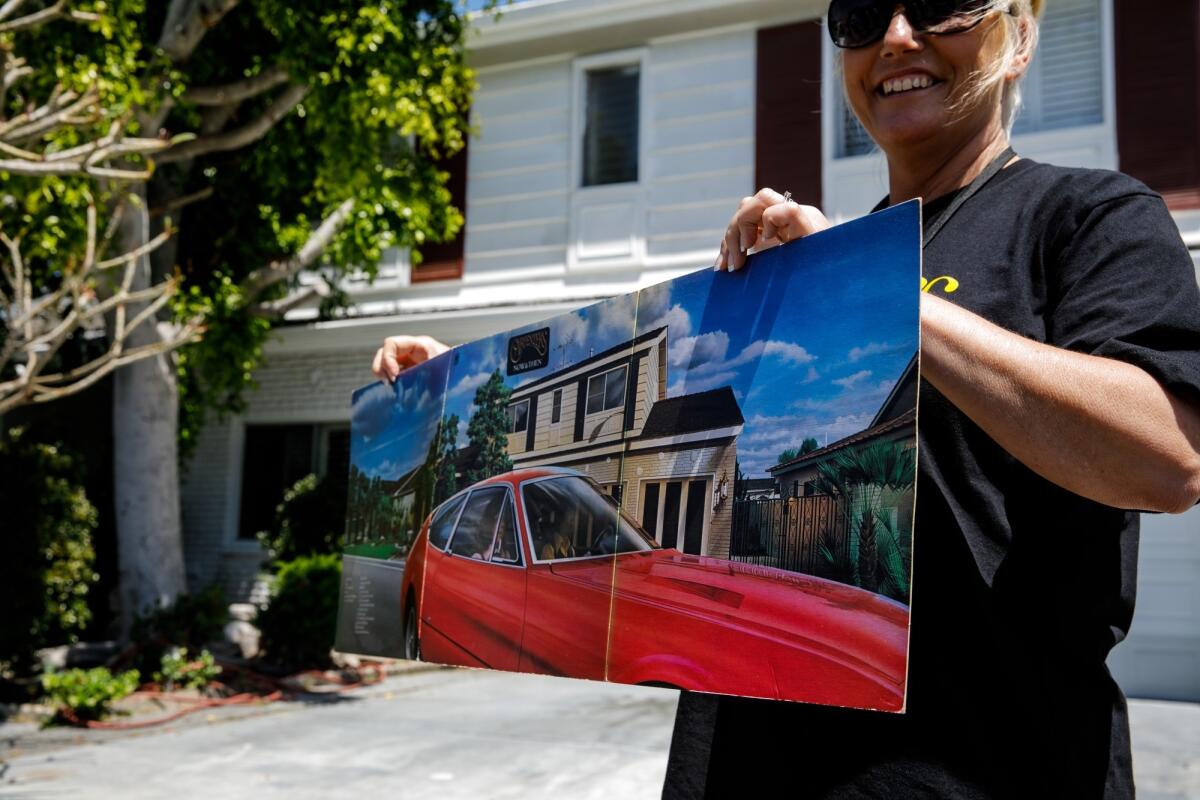
Which is funny, because not even their fans look at the group as anything like the voice of a generation. During their recording career, they became famous for making America feel good at a time when there was so much to feel bad about. The Vietnam War. The struggle for civil rights. Watergate. Wistful soft-rock — the Carpenters, Bread, James Taylor, Carole King, that guy who sang “Feelings” — was a balm in troubled times.
The Carpenters’ sunny affirmations (“Top of the World,” “Sing”) were sweet enough to give you an ice cream headache. Their midtempo songs and ballads, though — “We’ve Only Just Begun,” “Goodbye to Love,” “Only Yesterday,” “Rainy Days and Mondays” and especially their version of the Leon Russell/Bonnie Bramlett composition “Superstar” — were often transportive, thanks to Richard’s exquisite skill as an arranger, but most of all because of Karen’s contralto, which had an extraordinary relationship to the microphone and rarely seemed to be showing off — it just richly is, finding the right places to go.
“I don’t think even she realized how great she was,” says Michelle Berting Brett, a classically trained singer who brought her show of Carpenters songs to Downey for the celebration. “She made it sound so effortless, with these incredibly long phrases — the breath that girl had was incredible.”
You could dive into their sound but never the people who made it. The image Richard and Karen projected flowed from the reassuring music, but also from the way they looked: remote, powerful, satisfied. Fairly or not, the imagery stamped them for the rest of their lives as not-rock, not-counter anything, as cultural figures in a California lineage that included Ayn Rand, Ronald Reagan and Mike Curb. “I don’t even like milk,” Richard once sneered in Rolling Stone. When you have to disavow milk, the gig is up.
By 1972, they were visiting Nixon in the White House, where the president gave them White House golf balls and had them sing for German Chancellor Willy Brandt. They were, the president said, symbols of “young America at its best.”
For years after their last official album (1981’s “Made in America”), their music hung in the air like an omnipresent mist: gently wafting from Lite FM stations and doctors’ waiting rooms, from karaoke bars and piano lounges, and from wherever weddings receptions were held. It took Generation X to cast the Carpenters in a new light, to manipulate and critique the group’s bruised banality in ways old fans might not have appreciated.
Director Todd Haynes’ short 1987 film, “Superstar: The Karen Carpenter Story,” told a version of Karen’s life using Barbie dolls in place of actors. Haynes hadn’t licensed the music he used, and nobody would show it commercially for fear of being sued, yet in its time “Superstar” achieved considerable underground status. It became a harbinger of themes Haynes has developed subsequently: America’s obsession with hygienic purity; the toll of gender roles and of fame.
Indie bands, as well, were rediscovering the Carpenters. “If I Were a Carpenter,” a 1994 tribute compilation, featured covers by alt-rock acts like the Cranberries, Redd Kross and Sonic Youth, whose deadpan, dissolute version of “Superstar” took center stage. Karen performed it from the point of view of a fan who fell in love with a star one night at a show and now yearns for contact that comes only from the radio. The way Sonic Youth’s Thurston Moore frames it, the superstar was Karen, and the distance between the image and the tragic life echoes in waves of sadness.

Today, the Carpenters’ legacy is open for a new round of rediscovery and deconstruction. USC professor Karen Tongson, in her new book, “Why Karen Carpenter Matters,” argues that she “matters to people of color, immigrants, queer people, gender outlaws.” Last year, singer-songwriter Natalie Prass (who played Karen Carpenter on HBO’s “Vinyl”) released “Far From You,” a reverse image of the Carpenters’ “Close to You” that restores distance and pain to the picture. On psych-soft rock band Weyes Blood’s acclaimed new album “Titanic Rising,” singer Natalie Mering all but channels Carpenter, giving her an emotional autonomy she never had in her life. And in last year’s deranged horror film “Mandy,” a cult leader kidnaps a woman and forces her to submit to a Satanic inauguration. But first, he has a question for her: “Do you like the Carpenters?” Even today, Karen and Richard force us to choose.
‘Close’ call
Downey, about 13 miles south of Los Angeles, officially became a city in 1956. By then a growing aerospace industry had established it as a free-standing suburban enclave. Downey scored big in the pop-culture sweepstakes: It has the oldest surviving McDonalds and is the birthplace of Taco Bell. It was a hot-rod hotbed and home to musicians Dave and Phil Alvin, Metallica’s James Hetfield and Weird Al Yankovic.
But it wasn’t any music from Downey that affected the Carpenters sound; it was the orderliness and control of the place itself. After restrictive covenants were ruled unenforceable, real estate agents found ways to keep homeowners from selling to nonwhites. Then, in the aftermath of the Watts riots of 1965, whites fled many communities bordering Downey, but the city itself remained unchanged and unruffled, in large part because it had its own police and fire departments and school district, and was thus able to fend off integration for some years to come.
Agnes and Harold Carpenter, Karen and Richard’s parents, moved the family from New Haven, Conn. to Downey in 1963, in large part to continue Richard’s musical education. Once there, their kids created a sound out of various playfully high-toned California musics, including Burt Bacharach’s commuter romanticism, the go-kart go of the Beach Boys and the whiz-bang vocalizing of the Hi-Los and the Anita Kerr Singers. The sound and lyrics carried a nostalgic longing for the way things used to be almost from the moment the Carpenters started. Karen and Richard were in their 20s and wishing for it to be yesterday once more.
Fifty years ago, Herb Alpert and Jerry Moss, founders of A&M Records, were thinking of their future. “Richard knew how to get the most out of Karen’s unusual talent,” says Alpert. “He knew how to ... not necessarily manipulate her, but how to work with her.”
Alpert remembers the moment when he put on the Infinity Gauntlet and snapped his fingers. It was 1970, and he had just brought Karen and Richard a Burt Bacharach/Hal David tune he thought would be good for them: “Close to You.” Alpert had already recorded the song. “I asked my engineer, Larry Levine, what he thought of my version. He said, ‘You sound terrible.’ So I put it away and gave it to Karen and Richard. And that was the turning point.”
Alpert also talked Karen, who viewed herself as a drummer more than a singer, into coming forward to become the face of the group. He brought in session musicians from the Wrecking Crew, including drummer Hal Blaine and bassist Joe Osborn, to fill out the sound that would define them.
By the second half of the 1970s, with the hits trailing off, attention turned more sharply to their wholesome image, how it might be gently recalibrated, how Karen might redefine herself. She would hit reset on a solo album, which Richard criticized and the label kept under wraps until 1983, after her death.
Listeners increasingly noted the sadness in her voice, maybe most of all when she sang happy songs.
“I compare her to Ella Fitzgerald,” says USC’s Tongson. “Ella can be singing a sad song, but you always heard the smile in her voice. Well, Karen, she can be singing a happy song, but you hear the sadness in her voice. I think it mimics a kind of heaviness in ourselves.”
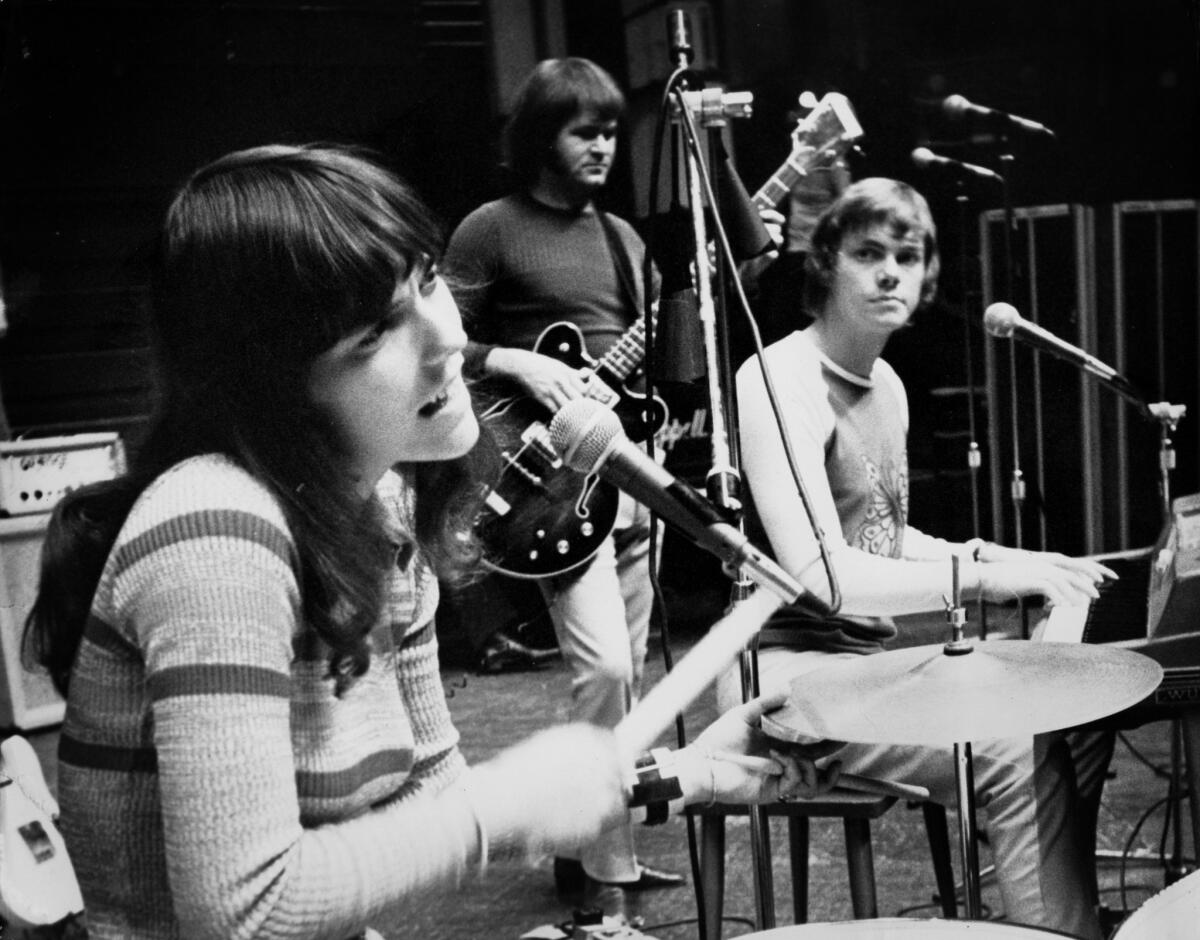
The happiest place
Singer-songwriter Jenny Lewis remembers where she was when she heard Karen Carpenter had died. She was 7 and living with her mother in the San Fernando Valley. Linda Lewis was a sometime lounge singer who emulated Karen: Today, if listeners hear Karen’s phrasing and diction in Lewis’ singing, it’s because she listened to her mother’s voice growing up.
“My mother was very upset when she died,” says Lewis. “And she was about 100 pounds herself. She looked exactly like Karen Carpenter.
“I feel Karen through her — a skeletal figure standing on a stage in front of people, petrified, self-conscious and afraid,” says Lewis. “I have immense empathy and love for Karen. An amazing drummer, a beautiful voice, a beautiful woman. How could you want more from her than what she gave?”
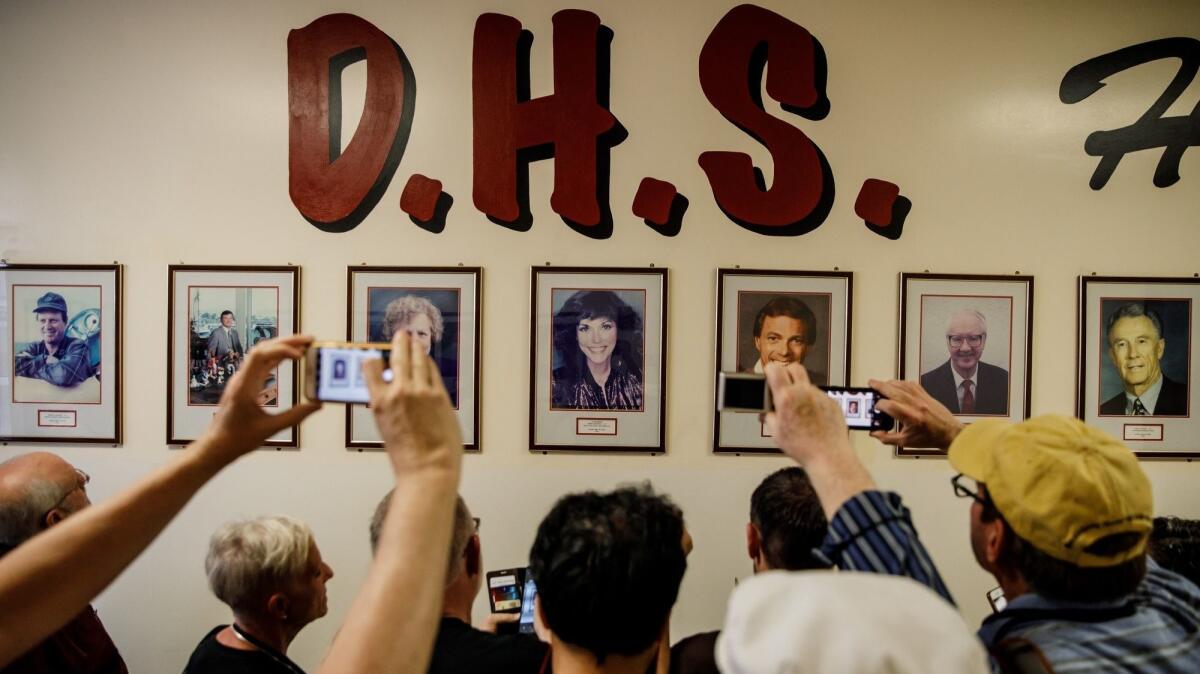
By the middle of the decade, photographs showed a singer who looked starved. Her marriage was falling apart. She was down to 77 pounds and moved to New York to receive treatment. She told interviewers she loved hamburgers and began taking massive amounts of laxatives, a thyroid medication and a drug that induces vomiting, all to get rid of what she ate.
In moments of stress, her mind would take her to Disneyland. “She was a big admirer of Walt Disney and Mickey Mouse,” says Greg Kuritz, one of the organizers of the Carpenters convention. The Carpenters loved Disneyland. Before they signed to A&M, Richard sang on the Magic Kingdom’s Main Street, U.S.A. in a vest and straw hat; their “Please Mr. Postman” video was filmed at Disneyland. In her home, Karen had shelves of Mickey Mouse memorabilia.
During the fan convention, a day tour of Carpenters landmarks includes the old A&M studio, the Walk of Fame and Hollywood Bowl. The bus then drives to a Woodland Hills Costco parking lot. From there, the assembled fans take a long walk to Pierce Brothers Valley Oaks Memorial Park, Karen’s final resting place.
“We had some flowers made to put at her crypt,” says Kuritz. “The florist shaped the vines like Mickey Mouse ears.”
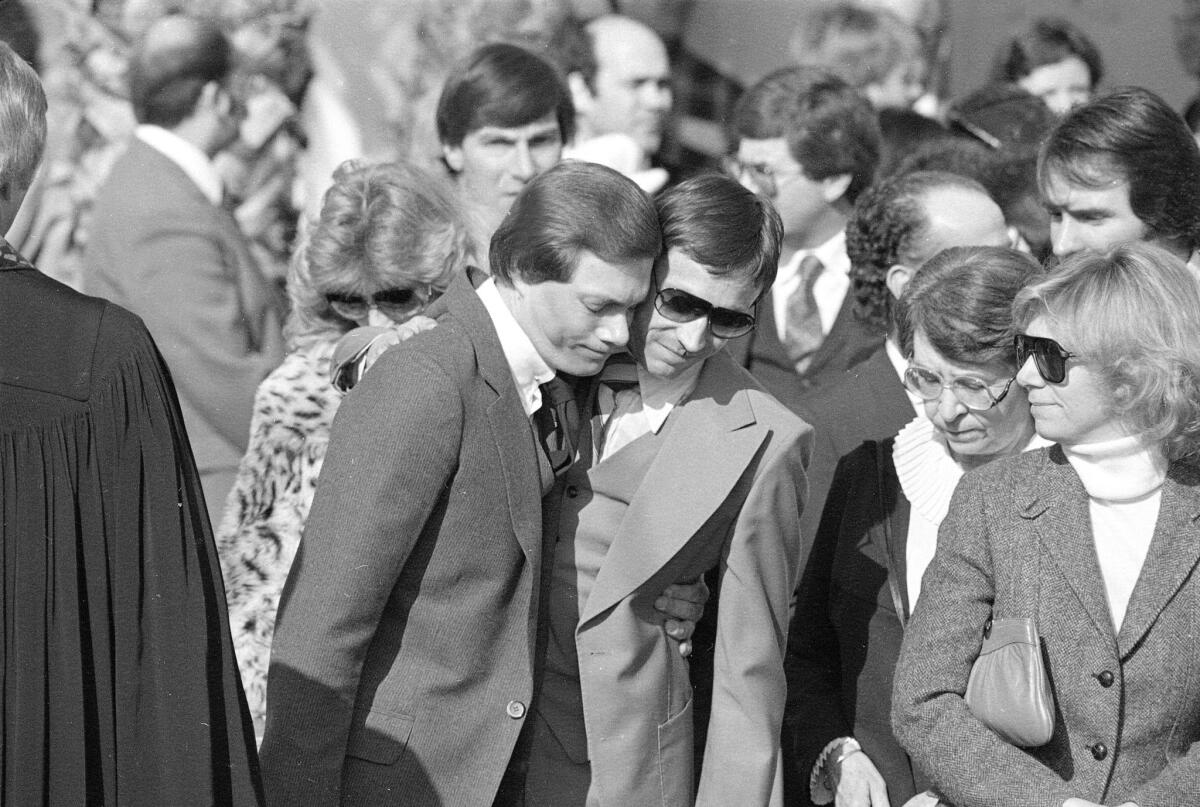
Finding home
A Carpenters fan from Maine, Jimmy Iovine (not the record executive) remembers the ways young fans might hide their ardor in the interest of seeming cool. As a teen in the 1970s, he had a friend with a big album collection. One day Iovine pulled out his friend’s copy of Rick Derringer’s hard-rock classic “All-American Boy,” and out slid the Carpenter’s greatest hits, tucked inside the sleeve. It was like reading Mad magazine behind your math textbook, only in reverse.
Later, when he became a career Navy man, Iovine would guardedly drop a few references to his favorite group with the guys, seeing if anybody responded favorably before tipping his hand.
Slowly things changed. “After Karen’s death, people revisited the music,” he says at the convention hotel in the Valley. Many rounds of “Carpenters Bingo” have just been played.
“There was a re-evaluation, and critics softened their edge. It kind of became OK to be a fan. I don’t think people hide their affections for them anymore.”
One of the Carpenters’ greatest songs was an outlier, “Calling Occupants of Interplanetary Craft,” a seven-minute sci-fi opus that sent a playful message to aliens everywhere to come home to Earth. The whole convention, in a sense, had been making a call of its own, to fellow fans around the world and to Richard Carpenter himself, who, as Carpenters50th.com’s homepage took pains to point out, is not affiliated with the gathering. (He also declined an interview for this story.) It was no accident the celebration is minutes away from Richard’s home. Word goes out: If Richard were to drop by, it would be on Saturday night, during a panel discussion featuring session musicians, producers and historians.
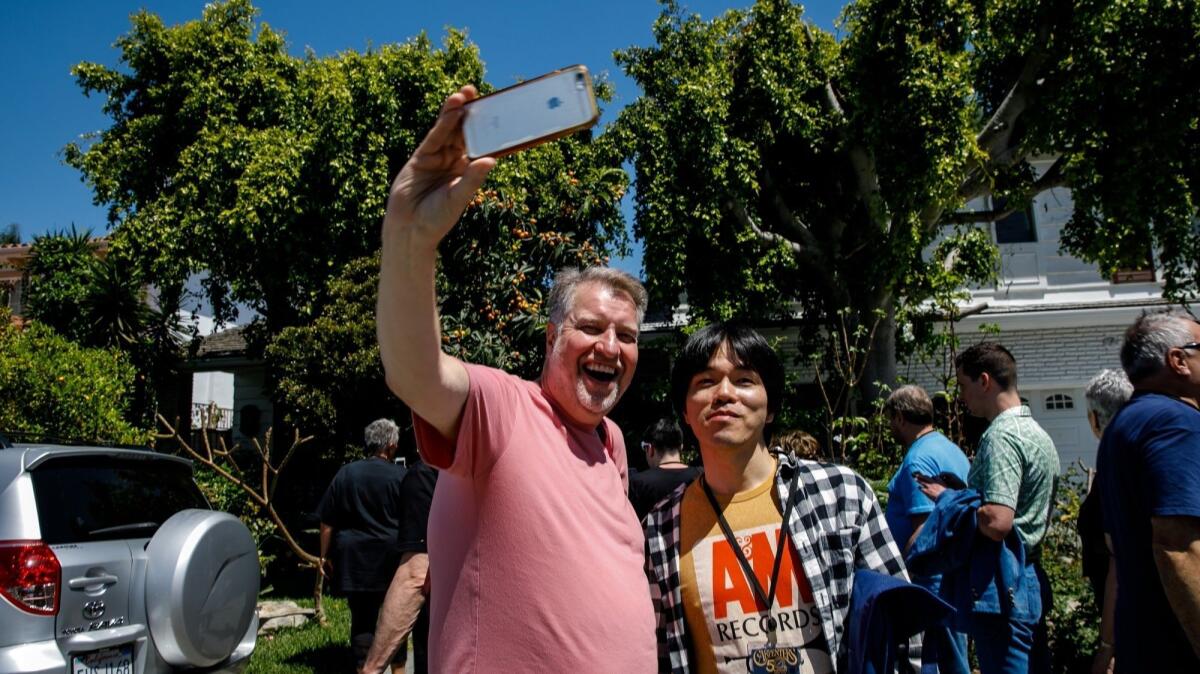
Jeffrey de Hart wanders the banquet room all evening, keeping spirits up, moving from table to table. After first hearing the Carpenters in his small West Virginia town, De Hart had gotten a paper route to pay for his own piano lessons when his father refused to. He longed to be where they were: musically, geographically. A year later, he discovered he was a prodigy and began teaching students of his own. By the time the Carpenters’ album “Horizon” came out in the summer of 1975, he discovered something else. “I realized I was coming of age in a conservative family and I did not fit in, so I ran away from home.”
He hitchhiked all the way to Downey. “I didn’t know what else to do,” he says in a quiet voice. “It was a mission, really a pilgrimage, I guess, though I didn’t think of it that way then. Then it was just an escape to find my identity.”
He rang the doorbell. The president of the Carpenters Fan Club answered the door and kindly explained that Karen and Richard were on tour in Japan.
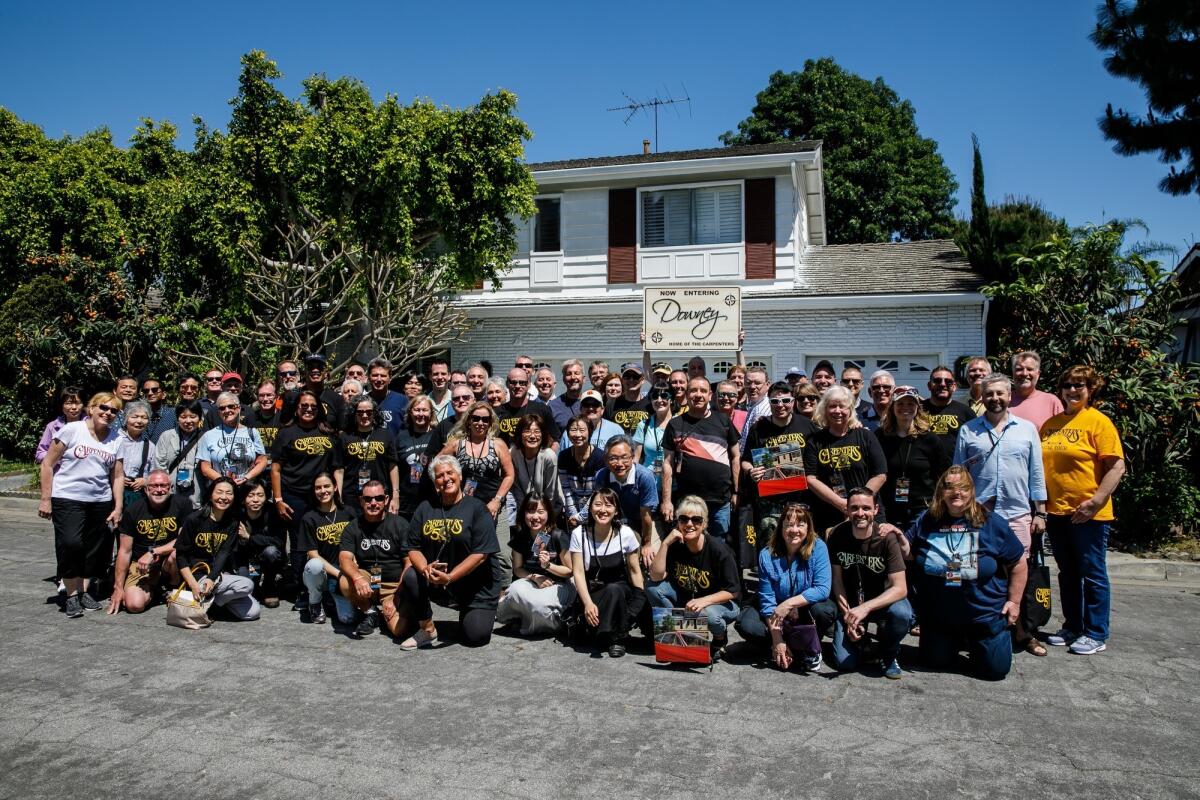
“What did I just do?” he asked himself. But he was in Southern California, and the experience of being there, in communion with the Carpenters, was the start of a new existence. A few years later he came out to friends and some family; eventually, he came out to his parents.
Today, De Hart is a paralegal based in Washington, D.C. On one level, he believes it was “Horizon” that set him on his path: “Their most sonically correct and advanced production techniques, perhaps even Richard’s peak at his songwriting prowess, was what inspired the journey,” he says.
But in a larger sense, it was the wholeness of the band, the sadness, the promise of Downey, that pulled him out of West Virginia and into a community of Carpenters fans and beyond. “It just turned my life around. It allowed me to discover my own true self.”
By the end of the night, Richard was a no-show. But nobody at the convention looked too disappointed.
More to Read
The biggest entertainment stories
Get our big stories about Hollywood, film, television, music, arts, culture and more right in your inbox as soon as they publish.
You may occasionally receive promotional content from the Los Angeles Times.










